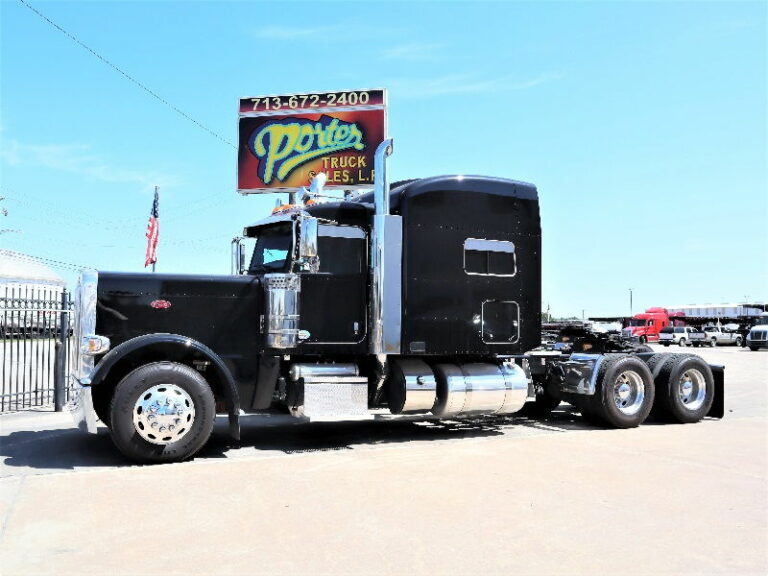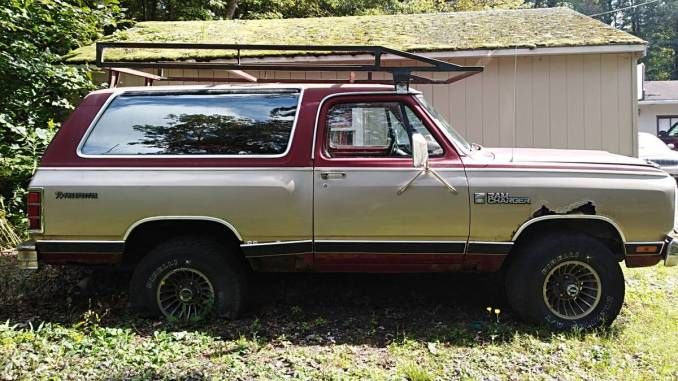Glass Trucks For Sale: Your Comprehensive Guide to Specialized Glass Transportation
Glass Trucks For Sale: Your Comprehensive Guide to Specialized Glass Transportation cars.truckstrend.com
Introduction: The Delicate Dance of Glass and the Power of Specialized Trucks
In the world of construction, architecture, and specialized manufacturing, few materials are as beautiful, versatile, and simultaneously as fragile as glass. From towering skyscraper facades and expansive residential windows to delicate art installations and custom shower enclosures, glass is an indispensable component. However, the true challenge lies not just in manufacturing or installing these delicate sheets, but in transporting them safely and efficiently from point A to point B. This is where specialized "glass trucks" come into play.
Glass Trucks For Sale: Your Comprehensive Guide to Specialized Glass Transportation
A glass truck is far more than just a standard flatbed or box truck; it’s a meticulously engineered vehicle designed specifically to cradle, secure, and transport large, heavy, and often irregularly shaped glass panes and units without damage. These specialized vehicles are equipped with unique features like A-frame racks, sophisticated securing mechanisms, and reinforced chassis to handle the unique stresses and challenges of glass transportation. For businesses dealing with glass – whether fabricators, installers, distributors, or glaziers – acquiring the right glass truck is not merely an expense, but a critical investment in safety, efficiency, professionalism, and ultimately, profitability. This comprehensive guide will delve into every aspect of glass trucks for sale, providing you with the knowledge needed to make an informed decision.
Understanding Glass Trucks: More Than Just a Flatbed
At its core, a glass truck is a commercial vehicle – ranging from light-duty pickups to heavy-duty tractor-trailers – that has been custom-fitted or built from the ground up to transport glass safely. The primary distinguishing feature is the A-frame rack system, which provides the essential support and angle necessary to prevent glass from flexing, cracking, or shattering during transit.
Key Components and Design Philosophy:
- A-Frame Racks: These are the most critical component. They consist of a triangular support structure that holds glass at a slight incline (typically 5-10 degrees off vertical). This angle helps distribute the glass’s weight and keeps it stable against the rack.
- External A-Frames: Mounted on the exterior of a truck’s chassis or bed. They allow for maximum glass size and easy loading/unloading from the side. Often seen on flatbeds or stake body trucks.
- Internal A-Frames: Integrated within an enclosed box truck body. These offer protection from weather and theft, but limit the maximum size of glass that can be carried to the interior dimensions of the truck. They often feature side-access doors for loading.

- Securement Systems: Beyond the A-frame, robust clamping or strapping systems are vital. These can include:
- Rubber-padded clamps: Hydraulically or manually operated, these secure the glass tightly against the A-frame without scratching.
- Nylon straps with ratchets: Used to cinch down loads, often in conjunction with rubber padding.
- Vacuum lifters: For extremely large or heavy units, some advanced systems integrate on-board vacuum lifters for safe loading and unloading.

- Reinforced Chassis and Suspension: Glass is incredibly heavy. A truck designed for glass transport must have a chassis and suspension system capable of handling concentrated, heavy loads without compromising stability or vehicle integrity. Air ride suspensions are often preferred for their ability to absorb road shock, further protecting the delicate cargo.
- Cab Protection: A robust headache rack or bulkhead behind the cab is essential to protect the driver and passengers in case of sudden stops or shifting loads.
- Loading Platforms and Access: Many glass trucks feature extendable platforms or strategically placed steps to facilitate safer loading and unloading, especially for taller panes.

Standard trucks, even with careful strapping, simply cannot provide the rigid, angled support and specialized securing mechanisms required to transport large quantities of delicate glass safely. Attempting to do so risks catastrophic breakage, significant financial loss, and severe safety hazards.
Types of Glass Trucks: Matching the Vehicle to the Vision
Glass trucks come in various configurations, each suited for different capacities, types of jobs, and operational needs.
-
Light-Duty Glass Trucks:
- Chassis: Typically based on commercial vans (e.g., Ford Transit, Mercedes-Benz Sprinter) or heavy-duty pickup trucks (e.g., Ford F-350/450, Ram 3500/4500).
- Configuration: Often feature smaller external A-frames or custom internal racks.
- Ideal for: Smaller glazing companies, residential window installers, or businesses that transport smaller, lighter glass units for repair or custom jobs. Limited capacity for very large or numerous panes.
-
Medium-Duty Glass Trucks:
- Chassis: Common commercial truck chassis like Isuzu N-Series, Hino 195, Freightliner M2, or Ford F-650/750.
- Configuration: Can have larger external A-frames on flatbeds, stake bodies, or often enclosed box bodies with internal A-frames and side access.
- Ideal for: Medium-sized glazing contractors, window and door distributors, or companies handling a mix of residential and light commercial projects. Offers a good balance of capacity, maneuverability, and cost.
-
Heavy-Duty Glass Haulers:
- Chassis: Larger commercial truck chassis (e.g., Peterbilt, Kenworth, Volvo, Freightliner Cascadia) configured as straight trucks or tractor-trailers.
- Configuration: Feature very large, robust external A-frames, often with multiple securing points, or custom-built internal systems for oversized architectural glass.
- Ideal for: Large-scale commercial glass distributors, major facade contractors, or companies transporting massive, specialized glass units for skyscrapers, storefronts, or unique architectural projects. These often require specialized permits and experienced drivers.
-
Specialized Glass Trailers:
- Configuration: Dedicated trailers, either flatbed with A-frames or enclosed "glass carriers," pulled by a tractor unit.
- Ideal for: Long-haul transportation of large volumes of glass, or for companies that need the flexibility to detach the trailer at a job site while the tractor unit performs other tasks.
The Indispensable Benefits of Owning a Glass Truck
Investing in a specialized glass truck offers numerous advantages that directly impact a business’s bottom line and reputation:
- Enhanced Safety & Damage Prevention: This is paramount. The primary benefit is the dramatic reduction in glass breakage during transit. The angled support, secure clamping, and robust construction minimize vibrations and shifting, preventing costly damage. This also significantly reduces the risk of injury to workers during loading, unloading, and transit.
- Operational Efficiency & Time Savings: Specialized trucks allow for quicker, safer loading and unloading. With dedicated space and securing mechanisms, drivers spend less time fussing with makeshift solutions and more time on the road. This translates to faster project completion and more jobs per day.
- Professionalism & Reputation: Arriving at a job site with a purpose-built glass truck signals professionalism and commitment to safety and quality. It instills confidence in clients and helps secure future contracts.
- Regulatory Compliance: Properly equipped and loaded glass trucks are more likely to meet Department of Transportation (DOT) and other local transportation regulations regarding load securement and weight distribution, avoiding fines and legal issues.
- Reduced Insurance Costs: Fewer instances of damaged goods and worker injuries can lead to lower insurance premiums and a better claims history.
Key Considerations When Searching for Glass Trucks For Sale
When evaluating glass trucks for sale, a thorough approach is crucial. Here are the key factors to consider:
- Capacity & Dimensions:
- What are the typical sizes and weights of the glass units you transport? (e.g., maximum height, length, weight per pane).
- Do you need to transport multiple panes simultaneously?
- Ensure the truck’s payload capacity and rack dimensions comfortably exceed your largest anticipated loads.
- Rack System Type:
- Internal vs. External A-Frame: External offers greater flexibility for oversized glass but less weather protection. Internal offers security and weather protection but limits glass size.
- Fixed vs. Removable Racks: Fixed racks are permanent. Removable racks allow the truck to be used for other purposes when not transporting glass.
- Securement Mechanism: Evaluate the quality and ease of use of the clamping or strapping systems. Are they robust, easy to operate, and safe?
- Chassis & Drivetrain:
- Engine Power: Is it sufficient for carrying heavy loads, especially on inclines?
- Transmission: Automatic vs. manual. Consider driver preference and efficiency.
- Suspension: Air ride suspension is highly recommended for glass transport due to its ability to absorb road shocks, protecting the delicate cargo. Leaf springs can be harsher.
- Braking System: Ensure powerful, reliable brakes are present, especially for heavy loads. Air brakes are common on medium and heavy-duty trucks.
- Condition (New vs. Used):
- New Trucks: Offer warranties, latest technology, and customization options. Higher initial cost.
- Used Trucks: More affordable, quicker availability. Requires thorough inspection.
- Safety Features: Beyond the racks, consider features like ABS brakes, traction control, stability control, ample lighting, reverse cameras, and robust mirrors for enhanced visibility.
- Maintenance & Durability:
- Research the reliability of the truck’s make and model.
- Consider the availability and cost of parts and service.
- Are the racks made from durable, corrosion-resistant materials?
- Regulatory Compliance:
- Understand DOT regulations regarding commercial vehicle operation, load securement, and driver licensing (CDL requirements).
- Be aware of weight limits and bridge laws in your operating areas.
Where to Find Your Next Glass Truck
Finding the right glass truck requires knowing where to look:
- Commercial Truck Dealerships: Both new and used commercial truck dealerships often carry specialized vehicles or can custom-order them. They offer financing, warranties, and service.
- Online Marketplaces:
- Specialized Commercial Vehicle Sites: TruckPaper.com, CommercialTruckTrader.com, MyLittleSalesman.com are excellent resources for used commercial trucks, including specialized glass carriers.
- General Marketplaces: eBay Motors, Facebook Marketplace can occasionally yield listings from private sellers, but require more caution and thorough inspection.
- Auctions & Liquidation Sales: Public and private auctions (e.g., Ritchie Bros. Auctioneers, GovPlanet) are good for finding used equipment, often at competitive prices. This route is best for experienced buyers who can quickly assess vehicle condition.
- Direct from Glass Companies: Companies upgrading their fleet or going out of business may sell their used glass trucks directly. This can be a great way to find well-maintained vehicles.
A Buyer’s Checklist: Inspecting a Used Glass Truck
Purchasing a used glass truck can save money, but a rigorous inspection is non-negotiable to avoid costly surprises.
- Frame and Suspension: Look for cracks, bends, or significant rust on the chassis frame. Check leaf springs, airbags, shocks, and kingpins for wear or damage. Uneven wear on tires can indicate suspension issues.
- Engine and Drivetrain: Check for fluid leaks (oil, coolant, transmission fluid). Start the engine: listen for unusual noises, check exhaust smoke color. Test the transmission for smooth shifting. Inspect the differential and driveshaft.
- Brakes and Tires: Examine tire tread depth and uniformity. Check brake pads/shoes, rotors/drums, and air lines (for air brakes) for wear or damage. Test the parking brake.
- Glass Racks & Securement Systems:
- Inspect the A-frame structure for cracks, welds, bends, or corrosion.
- Check all rubber padding for tears, hardening, or missing sections.
- Test all clamping mechanisms, straps, and ratchets for proper function and wear. Ensure they operate smoothly and securely.
- Verify the integrity of the mounting points to the truck chassis.
- Cab and Electrical: Check all lights, gauges, HVAC, and power windows. Look for signs of water leaks or excessive wear in the cab.
- Documentation: Request maintenance records, title, and any accident history. Verify VIN numbers match all documents.
Maintenance and Operational Tips for Glass Truck Owners
Once you own a glass truck, proper maintenance and operational practices are key to its longevity and the safety of your cargo.
- Routine Rack Inspection: Before every trip, visually inspect the A-frames, padding, and securement devices for wear, damage, or foreign objects. Any worn padding should be replaced immediately.
- Load Distribution: Always distribute glass weight evenly across the A-frame and within the truck’s weight limits. Avoid concentrating heavy loads in one spot.
- Securement Protocols: Train drivers rigorously on proper securement techniques. Ensure all glass is tightly clamped or strapped, with no possibility of shifting during sudden stops or turns.
- Driver Training: Drivers should be trained not just on securing glass, but also on the unique driving characteristics of a heavily loaded truck carrying fragile cargo. Smooth acceleration, gentle braking, and cautious cornering are essential.
- Preventive Chassis Maintenance: Adhere to the manufacturer’s schedule for engine, transmission, brake, and suspension maintenance. Lubricate all moving parts on the A-frame system regularly.
Navigating Challenges in Glass Transportation
Even with specialized equipment, challenges can arise. Proactive solutions are vital.
- Glass Breakage:
- Challenge: Despite best efforts, glass can still break due to road conditions, improper securement, or internal stress.
- Solution: Meticulous pre-trip inspection of racks and securement. Driver training on smooth driving techniques. Investing in air-ride suspension. Considering internal racks for added protection. Adequate insurance coverage.
- Overloading & Weight Distribution:
- Challenge: Exceeding weight limits or improper weight distribution can lead to fines, vehicle damage, and safety hazards.
- Solution: Know your truck’s Gross Vehicle Weight Rating (GVWR) and Gross Axle Weight Ratings (GAWR). Weigh loads if uncertain. Use appropriate truck size for the job. Train staff on calculating load weights and proper placement.
- Maneuverability in Tight Spaces:
- Challenge: Larger glass trucks can be difficult to maneuver in urban environments or tight construction sites.
- Solution: Plan routes in advance. Utilize spotters for backing. Consider trucks with a shorter wheelbase for city driving, or those with all-wheel steering if available for niche applications.
- Initial Investment:
- Challenge: Specialized glass trucks can be a significant capital expenditure.
- Solution: Explore financing options (loans, leases). Consider purchasing a well-maintained used truck. Calculate the Return on Investment (ROI) by factoring in reduced breakage costs, increased efficiency, and enhanced reputation.
Glass Truck Price Guide
The price of a glass truck varies widely based on type, chassis, capacity, condition (new vs. used), and the sophistication of the glass rack system. This table provides estimated price ranges.
| Truck Type / Chassis | Rack Type / Features | Condition | Capacity (approx.) | Est. Price Range (USD) | Notes |
|---|---|---|---|---|---|
| Light-Duty | |||||
| Ford Transit Van | Internal A-Frame | Used | 1,500 – 3,000 lbs | $25,000 – $55,000 | Good for residential, smaller panes. |
| Ram ProMaster Van | Internal A-Frame | New | 2,000 – 4,000 lbs | $60,000 – $90,000+ | Often includes custom interior shelving. |
| Ford F-350/450 | External A-Frame (Flatbed/Stake) | Used | 3,000 – 6,000 lbs | $30,000 – $70,000 | Versatile, but less weather protection. |
| Medium-Duty | |||||
| Isuzu N-Series (NPR/NQR) | External A-Frame (Flatbed) | Used | 8,000 – 15,000 lbs | $40,000 – $90,000 | Popular for maneuverability and capacity. |
| Isuzu N-Series (NPR/NQR) | Internal A-Frame (Box Truck) | New | 10,000 – 18,000 lbs | $100,000 – $160,000+ | Offers security and weather protection. |
| Freightliner M2 | External A-Frame (Flatbed) | Used | 15,000 – 25,000 lbs | $60,000 – $120,000 | Strong workhorse, good for larger jobs. |
| Hino 268 | Internal/External A-Frame | New | 15,000 – 25,000 lbs | $130,000 – $200,000+ | Reliable, often with air ride options. |
| Heavy-Duty | |||||
| Freightliner Cascadia | Large External A-Frame (Straight) | Used | 25,000 – 40,000 lbs | $80,000 – $180,000 | For substantial architectural glass. |
| Peterbilt/Kenworth | Custom Oversized External A-Frame (Straight) | New | 30,000 – 50,000 lbs | $250,000 – $450,000+ | Highly customized for specific, very large loads. |
| Specialized Trailers | |||||
| Flatbed w/ A-Frame | Tandem Axle, External A-Frame | Used | 30,000 – 60,000 lbs | $20,000 – $50,000 | Requires a separate tractor unit. |
| Enclosed Glass Trailer | Multi-rack Internal System | New | 40,000 – 70,000 lbs | $80,000 – $150,000+ | Offers maximum protection for high-value glass. |
Note: Prices are estimates and can fluctuate significantly based on mileage, condition, specific features, geographical location, market demand, and economic factors. Custom builds or highly specialized features will increase costs.
Frequently Asked Questions (FAQ) About Glass Trucks
Q1: Why can’t I just use a regular flatbed truck with straps to transport glass?
A1: While possible for very small, non-critical pieces, it’s highly unsafe and inefficient for larger or valuable glass. Regular flatbeds lack the angled support of an A-frame, causing glass to flex and potentially shatter. Straps alone don’t provide sufficient, uniform pressure, leading to shifting, scratching, and breakage. Specialized trucks minimize damage, ensure safety, and comply with regulations.
Q2: What’s the main difference between an internal and external A-frame?
A2: External A-frames are mounted on the outside of the truck bed or chassis, allowing for transport of very large panes that exceed the width of the truck body. They offer easy side loading. Internal A-frames are built inside an enclosed box truck, providing protection from weather, theft, and road debris. However, the size of glass you can transport is limited by the interior dimensions of the truck.
Q3: Do I need a special driver’s license to operate a glass truck?
A3: It depends on the truck’s Gross Vehicle Weight Rating (GVWR) and whether it’s classified as a Commercial Motor Vehicle (CMV). Most medium and heavy-duty glass trucks, or combinations (truck and trailer) exceeding certain weight thresholds, will require a Commercial Driver’s License (CDL) with appropriate endorsements (e.g., air brakes). Always check your local Department of Motor Vehicles (DMV) or equivalent transportation authority for specific requirements.
Q4: How often should the glass racks and securement systems be inspected?
A4: A thorough visual inspection should be performed before every trip to check for any damage, wear, or missing components in the A-frame, padding, clamps, and straps. A more detailed inspection should be part of your routine preventive maintenance schedule (e.g., monthly or quarterly), checking for structural integrity, corrosion, and proper operation of all moving parts.
Q5: Are there financing options available for purchasing a glass truck?
A5: Yes, most commercial truck dealerships offer financing options, including loans and leases. Banks and specialized equipment financing companies also provide tailored solutions for businesses looking to acquire commercial vehicles. Interest rates and terms will depend on your creditworthiness, the age of the truck (new vs. used), and the loan amount.
Q6: What’s the best way to prevent glass breakage during transport?
A6: The best prevention involves a combination of factors:
- Using a purpose-built glass truck with properly functioning A-frames and securement systems.
- Ensuring all glass is properly padded and tightly secured against the racks.
- Distributing weight evenly and not overloading the truck.
- Training drivers in smooth driving techniques (avoiding sudden stops, sharp turns, or rapid acceleration).
- Maintaining proper tire pressure and considering air-ride suspension.
Conclusion: Investing in Precision and Protection
For any business where glass is a core material, the decision to invest in a specialized glass truck is a strategic one that extends far beyond simple transportation. It’s an investment in the safety of your cargo and your crew, the efficiency of your operations, and the professional reputation of your company. While the initial cost may seem substantial, the long-term benefits – reduced damage, fewer insurance claims, faster project completion, and enhanced client confidence – far outweigh the expenditure.
By understanding the different types of glass trucks, meticulously evaluating your specific needs, conducting thorough inspections, and committing to proper maintenance, you can acquire a vehicle that serves as a robust, reliable, and indispensable asset. A well-chosen glass truck is not just a mode of transport; it’s a testament to your commitment to precision, protection, and unparalleled service in the delicate world of glass.






